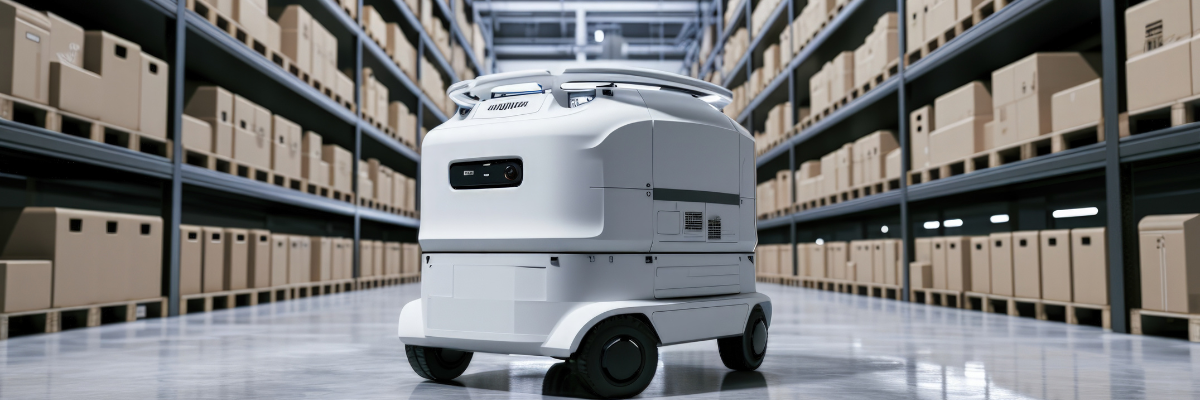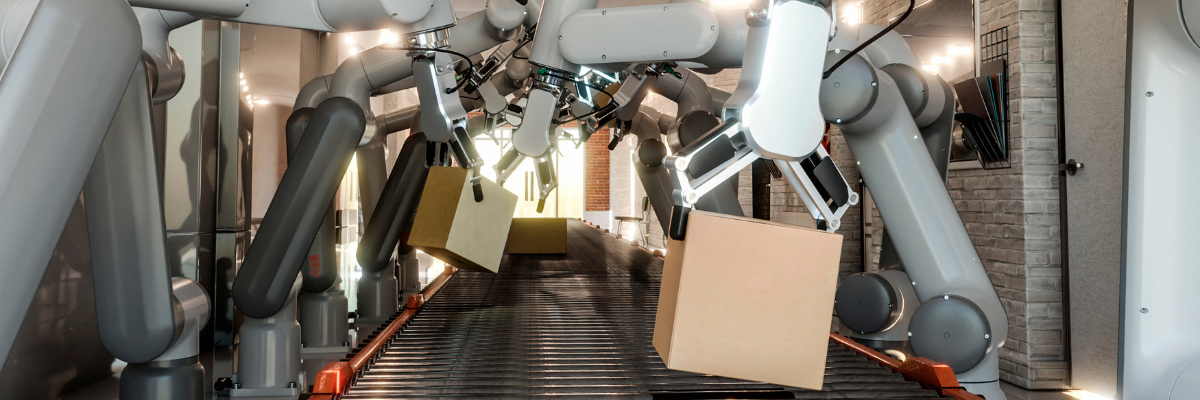The concept of warehouse automation is central for all companies that want to remain competitive in an increasingly demanding market. Consumption rates are rising, product variety is increasing, demands for fast deliveries are multiplying, and consequently, the complexity of managing logistics flows becomes a daily challenge. For warehouse managers, supply chain managers, and entrepreneurs aiming to optimize time and costs, investing in warehouse logistics automation is no longer an option but a necessity.
Emerging technologies, such as warehouse cobots and logistics AMRs, are revolutionizing internal logistics by making processes more efficient, safe, and scalable. These tools do not replace humans but assist them, allowing the elimination of repetitive tasks, reduction of errors, and increased overall productivity.

Warehouse cobots: how they support operators
Among the solutions we will see increasingly present in warehouses in 2025 are warehouse cobots, collaborative robots designed to work side by side with human operators. Unlike traditional robots, which operate in isolated spaces for safety reasons, cobots are equipped with advanced sensors that allow them to interact safely and flexibly with people.
In practice, cobots can handle repetitive tasks such as picking items from shelves, packaging, or labeling. This allows operators to focus on higher-value activities, such as quality control or exception management. Another advantage of warehouse cobots is the speed of integration: they do not require complex infrastructures and can be easily reprogrammed to adapt to different tasks, ensuring a rapid return on investment even for small and medium-sized warehouses.
Logistics AMRs: mobile robots for warehouse automation
In addition to cobots, another key technology for warehouse automation is logistics AMRs. Autonomous Mobile Robots are intelligent mobile robots capable of moving autonomously within the warehouse, recognizing optimal routes, avoiding obstacles, and interacting with other machines and operators.
Logistics AMRs represent the evolution of classic AGVs (Automated Guided Vehicles). While the latter followed predefined paths, AMRs are equipped with sensors, cameras, and advanced navigation software that allow them to dynamically adapt to their surrounding environment.
In a modern warehouse, AMRs can be used to transport goods from one area to another, replenish workstations, supply packaging lines, or integrate with other automated operations. The result is a drastic reduction in transit times and better space management, as mobile robots move only when necessary and can coordinate with each other to avoid congestion.

How to implement warehouse logistics automation
Choosing to innovate with warehouse logistics automation is not just a matter of budget but also of strategic planning. Every warehouse has specific characteristics, and there is no one-size-fits-all solution. The first step is to analyze current workflows to identify the most repetitive or error-prone tasks, assessing how cobots and logistics AMRs can be integrated without disrupting the entire system.
It is essential to involve staff from the very beginning, training them to use new technologies and to understand the benefits they bring in terms of safety, ergonomics and reduction of operational stress. A smart warehouse is an environment where people remain central, supported by tools that simplify daily work.
Another crucial aspect is the integration of robots with warehouse management systems (WMS) and inventory management. Only in this way is it possible to optimally coordinate all activities, from goods receipt to shipping, monitoring stock in real time and optimizing the routes of mobile robots.
How Hubrise implements warehouse automation
Hubrise positions itself as a strategic partner for all companies looking to tackle the transformation of warehouse automation with concrete tools and personalized solutions. Hubrise’s inventory management service allows real-time stock monitoring, movement automation, and simplifies interaction between systems, machines, and operators. Thanks to integration with devices such as warehouse cobots and logistics AMRs, Hubrise offers a centralized platform for overseeing all operational phases, reducing waste, errors, and downtime.
With Hubrise, companies can rely on support that goes beyond simply providing technology: the approach starts with process analysis to identify areas for improvement, continues with the design of tailor-made solutions, and is completed with ongoing assistance to ensure that warehouse logistics automation becomes a real and measurable competitive advantage.